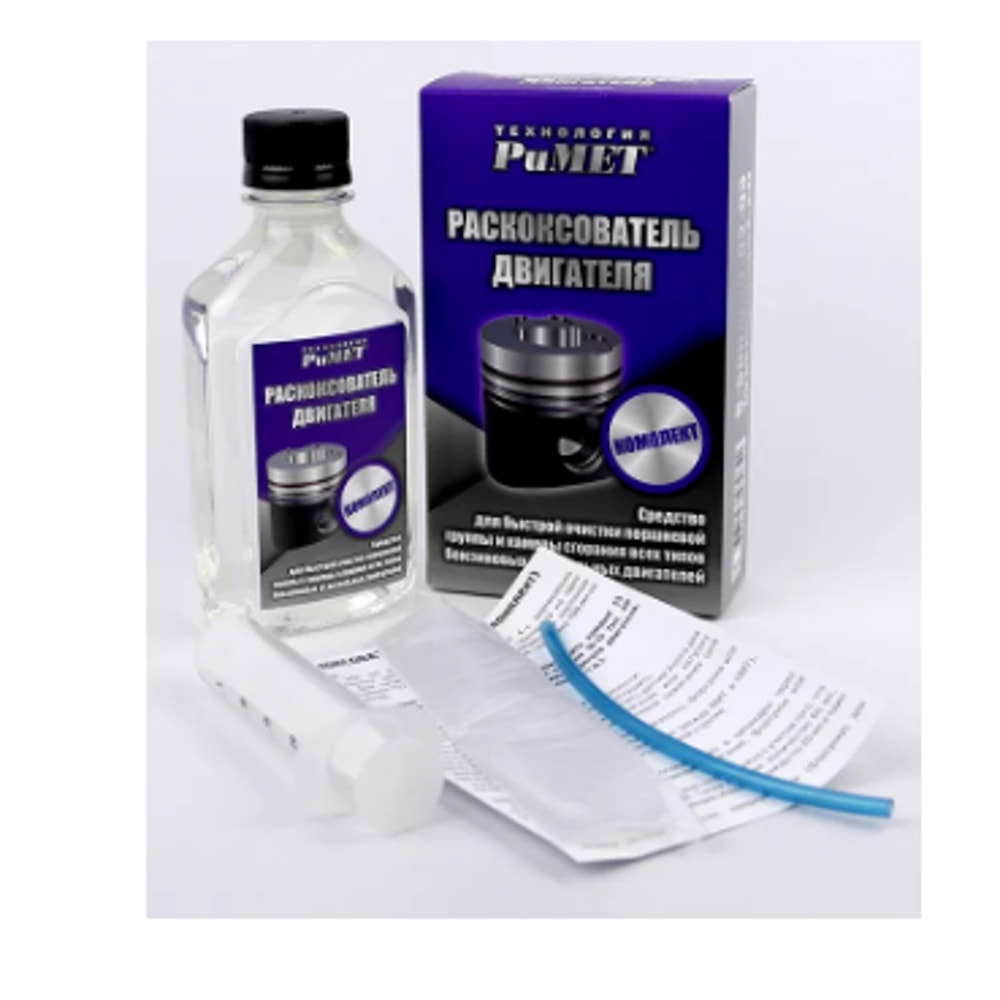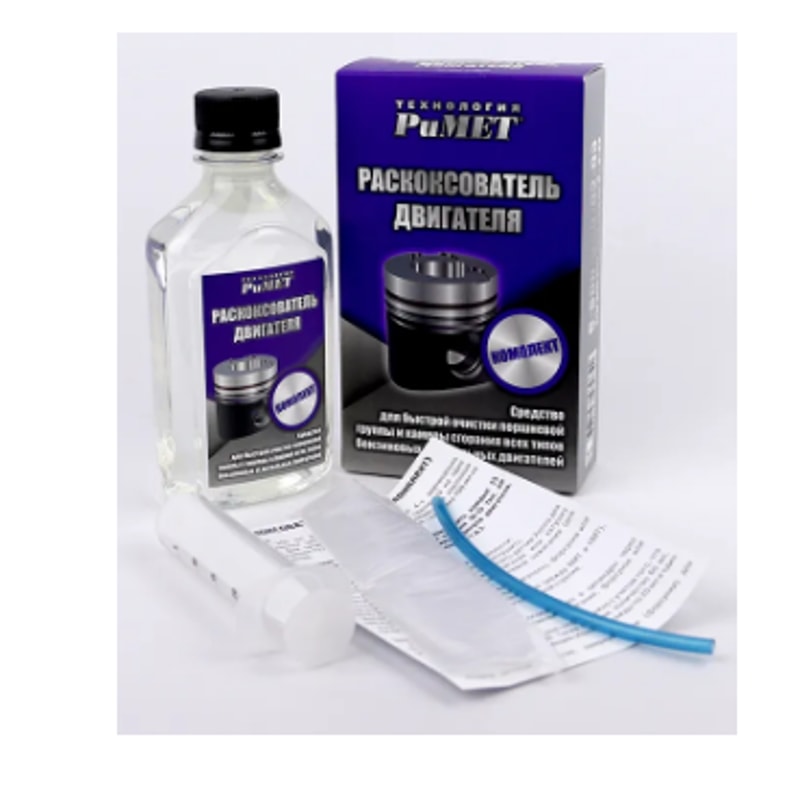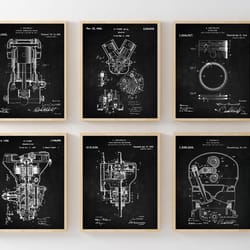Decarbonization of the engine, piston rings RiMET 240ml PT0022
Quantity
Decarbonization of the engine, piston rings RiMET 240ml PT0022
Carbon deposits (soot), which are products of incomplete combustion of fuel, appear during operation on some engine parts, and they are especially harmful to the piston group and combustion chamber. When soot is formed:
1. "sticking" (loss of mobility) of the piston rings occurs, which leads to a violation of their performance, which means a drop in compression in the cylinders, a decrease in engine power, a sharp decrease in resource, poor start-up, excessive consumption of fuel and oil, and an increase in exhaust gas toxicity;
2. favorable conditions are created for detonation, the ingress of carbon deposits on the electrodes and insulators of the candles leads to a disruption in the normal operation of the ignition system;
3. soot has good heat-insulating properties and prevents the transfer of heat from hot gases to the coolant;
4. When carbon deposits are present, the engine operates at higher temperatures and may overheat.
For trouble-free operation of the engine, deposits from the combustion chamber and pistons (engine decoking) must be removed from time to time. This is recommended to be done every 25 thousand km. mileage during normal operation and every 10-15 thousand kilometers during operation in difficult conditions (engine overheating, heavy loads, poor quality of oil and fuel, etc.).
RiMET engine decarbonizer is an effective tool for quick cleaning of the piston group and combustion chamber of all types of gasoline and diesel car engines. Decarbonizer is a complex of various solvents and surfactants.
- quickly and effectively removes tar-coke and soot deposits on the rings and parts of the combustion chamber;
- reduces the tendency of the engine to detonation and glow ignition;
- restores and equalizes compression in the engine cylinders;
- optimizes the temperature regime of the piston group;
- reduces engine noise;
- reduces the concentration of harmful substances in exhaust gases;
- reduces fuel and oil consumption;
- increases the reliability and service life of the engine;
- contributes to effective work on friction surfaces of antifriction and antiwear compositions.
Engine preparation:
- to establish the car on a horizontal surface;
- warm up the engine to operating temperature and shut it off;
- turn off the ignition system, to do this, turn off the Hall sensor for engines with a non-contact ignition system or the ignition coil for engines with a contact ignition system (to prevent accidental ignition);
- unscrew the spark plugs (petrol engine), injectors or glow plugs (diesel engine);
- set all pistons to the middle position (between TDC and BDC) by turning the crankshaft by the ratchet clockwise.
Filling the drug:
- the decarbonizer is poured directly into the cylinders through technological holes for spark plugs, injectors or glow plugs;
- it is necessary to fill in the decarbonizer with a syringe, taking into account the fact that the capacity of the hose is 5 ml. Thus, an amount of 60 ml, for example, can be poured as follows: twice 20 ml and and once 15 ml;
- close the spark plug holes by screwing on the spark plugs (injectors) to ensure the “vapor phase” in the combustion chamber;
- leave the decarbonizer in the cylinders for 1.5-2 hours. And for heavily coked - up to 12 hours;
- after the specified time, unscrew the candles (injectors);
- crank the crankshaft with the starter 2-3 times for 4-8 seconds with the gas pedal fully depressed;
- screw in the spark plugs (injectors) and restore the high voltage circuit;
- start the engine and let it run for 10-15 minutes in idle mode at medium speed, but not more than 2000 rpm;
- change the engine oil in the usual way, replace the oil filter.





